Li Huang
AMSnet 2.0: A Large AMS Database with AI Segmentation for Net Detection
May 14, 2025Abstract:Current multimodal large language models (MLLMs) struggle to understand circuit schematics due to their limited recognition capabilities. This could be attributed to the lack of high-quality schematic-netlist training data. Existing work such as AMSnet applies schematic parsing to generate netlists. However, these methods rely on hard-coded heuristics and are difficult to apply to complex or noisy schematics in this paper. We therefore propose a novel net detection mechanism based on segmentation with high robustness. The proposed method also recovers positional information, allowing digital reconstruction of schematics. We then expand AMSnet dataset with schematic images from various sources and create AMSnet 2.0. AMSnet 2.0 contains 2,686 circuits with schematic images, Spectre-formatted netlists, OpenAccess digital schematics, and positional information for circuit components and nets, whereas AMSnet only includes 792 circuits with SPICE netlists but no digital schematics.
SS-CTML: Self-Supervised Cross-Task Mutual Learning for CT Image Reconstruction
Dec 31, 2024



Abstract:Supervised deep-learning (SDL) techniques with paired training datasets have been widely studied for X-ray computed tomography (CT) image reconstruction. However, due to the difficulties of obtaining paired training datasets in clinical routine, the SDL methods are still away from common uses in clinical practices. In recent years, self-supervised deep-learning (SSDL) techniques have shown great potential for the studies of CT image reconstruction. In this work, we propose a self-supervised cross-task mutual learning (SS-CTML) framework for CT image reconstruction. Specifically, a sparse-view scanned and a limited-view scanned sinogram data are first extracted from a full-view scanned sinogram data, which results in three individual reconstruction tasks, i.e., the full-view CT (FVCT) reconstruction, the sparse-view CT (SVCT) reconstruction, and limited-view CT (LVCT) reconstruction. Then, three neural networks are constructed for the three reconstruction tasks. Considering that the ultimate goals of the three tasks are all to reconstruct high-quality CT images, we therefore construct a set of cross-task mutual learning objectives for the three tasks, in which way, the three neural networks can be self-supervised optimized by learning from each other. Clinical datasets are adopted to evaluate the effectiveness of the proposed framework. Experimental results demonstrate that the SS-CTML framework can obtain promising CT image reconstruction performance in terms of both quantitative and qualitative measurements.
Enhancing Data Quality through Self-learning on Imbalanced Financial Risk Data
Sep 15, 2024



Abstract:In the financial risk domain, particularly in credit default prediction and fraud detection, accurate identification of high-risk class instances is paramount, as their occurrence can have significant economic implications. Although machine learning models have gained widespread adoption for risk prediction, their performance is often hindered by the scarcity and diversity of high-quality data. This limitation stems from factors in datasets such as small risk sample sizes, high labeling costs, and severe class imbalance, which impede the models' ability to learn effectively and accurately forecast critical events. This study investigates data pre-processing techniques to enhance existing financial risk datasets by introducing TriEnhance, a straightforward technique that entails: (1) generating synthetic samples specifically tailored to the minority class, (2) filtering using binary feedback to refine samples, and (3) self-learning with pseudo-labels. Our experiments across six benchmark datasets reveal the efficacy of TriEnhance, with a notable focus on improving minority class calibration, a key factor for developing more robust financial risk prediction systems.
Self Adaptive Threshold Pseudo-labeling and Unreliable Sample Contrastive Loss for Semi-supervised Image Classification
Jul 04, 2024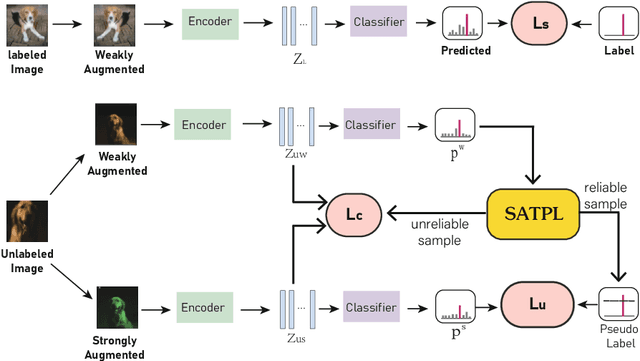



Abstract:Semi-supervised learning is attracting blooming attention, due to its success in combining unlabeled data. However, pseudo-labeling-based semi-supervised approaches suffer from two problems in image classification: (1) Existing methods might fail to adopt suitable thresholds since they either use a pre-defined/fixed threshold or an ad-hoc threshold adjusting scheme, resulting in inferior performance and slow convergence. (2) Discarding unlabeled data with confidence below the thresholds results in the loss of discriminating information. To solve these issues, we develop an effective method to make sufficient use of unlabeled data. Specifically, we design a self adaptive threshold pseudo-labeling strategy, which thresholds for each class can be dynamically adjusted to increase the number of reliable samples. Meanwhile, in order to effectively utilise unlabeled data with confidence below the thresholds, we propose an unreliable sample contrastive loss to mine the discriminative information in low-confidence samples by learning the similarities and differences between sample features. We evaluate our method on several classification benchmarks under partially labeled settings and demonstrate its superiority over the other approaches.
Multiscale lubrication simulation based on fourier feature networks with trainable frequency
May 21, 2024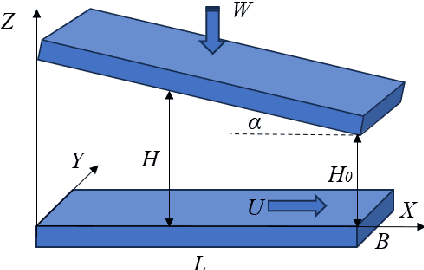



Abstract:Rough surface lubrication simulation is crucial for designing and optimizing tribological performance. Despite the growing application of Physical Information Neural Networks (PINNs) in hydrodynamic lubrication analysis, their use has been primarily limited to smooth surfaces. This is due to traditional PINN methods suffer from spectral bias, favoring to learn low-frequency features and thus failing to analyze rough surfaces with high-frequency signals. To date, no PINN methods have been reported for rough surface lubrication. To overcome these limitations, this work introduces a novel multi-scale lubrication neural network architecture that utilizes a trainable Fourier feature network. By incorporating learnable feature embedding frequencies, this architecture automatically adapts to various frequency components, thereby enhancing the analysis of rough surface characteristics. This method has been tested across multiple surface morphologies, and the results have been compared with those obtained using the finite element method (FEM). The comparative analysis demonstrates that this approach achieves a high consistency with FEM results. Furthermore, this novel architecture surpasses traditional Fourier feature networks with fixed feature embedding frequencies in both accuracy and computational efficiency. Consequently, the multi-scale lubrication neural network model offers a more efficient tool for rough surface lubrication analysis.
AMSNet: Netlist Dataset for AMS Circuits
May 15, 2024



Abstract:Today's analog/mixed-signal (AMS) integrated circuit (IC) designs demand substantial manual intervention. The advent of multimodal large language models (MLLMs) has unveiled significant potential across various fields, suggesting their applicability in streamlining large-scale AMS IC design as well. A bottleneck in employing MLLMs for automatic AMS circuit generation is the absence of a comprehensive dataset delineating the schematic-netlist relationship. We therefore design an automatic technique for converting schematics into netlists, and create dataset AMSNet, encompassing transistor-level schematics and corresponding SPICE format netlists. With a growing size, AMSNet can significantly facilitate exploration of MLLM applications in AMS circuit design. We have made an initial set of netlists public, and will make both our netlist generation tool and the full dataset available upon publishing of this paper.
The Treasure Beneath Multiple Annotations: An Uncertainty-aware Edge Detector
Mar 21, 2023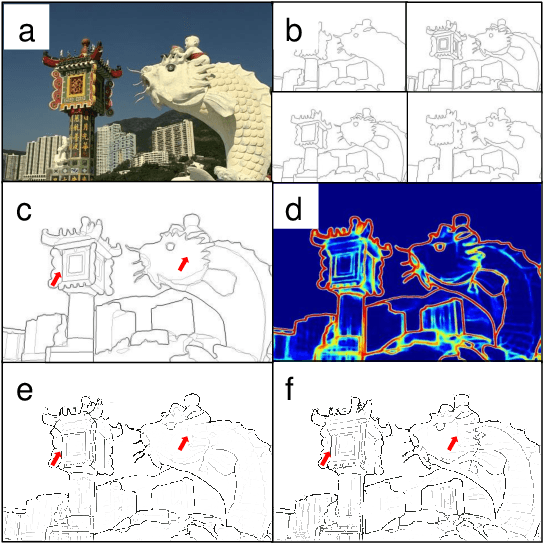
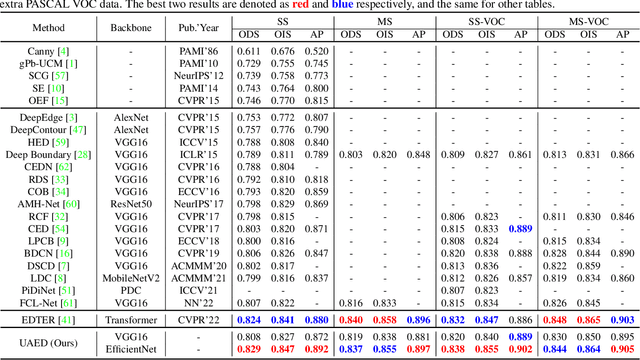
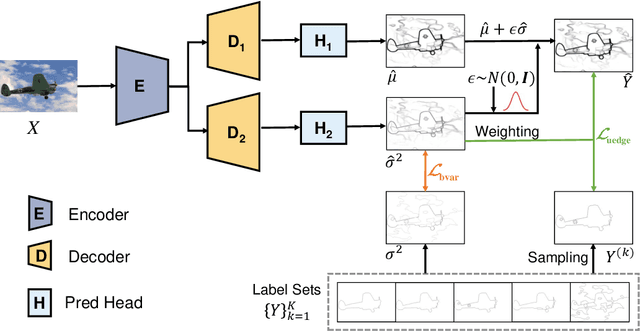
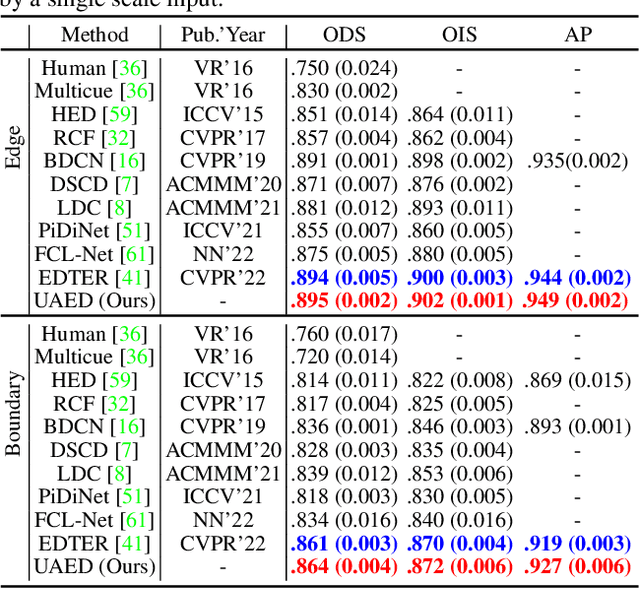
Abstract:Deep learning-based edge detectors heavily rely on pixel-wise labels which are often provided by multiple annotators. Existing methods fuse multiple annotations using a simple voting process, ignoring the inherent ambiguity of edges and labeling bias of annotators. In this paper, we propose a novel uncertainty-aware edge detector (UAED), which employs uncertainty to investigate the subjectivity and ambiguity of diverse annotations. Specifically, we first convert the deterministic label space into a learnable Gaussian distribution, whose variance measures the degree of ambiguity among different annotations. Then we regard the learned variance as the estimated uncertainty of the predicted edge maps, and pixels with higher uncertainty are likely to be hard samples for edge detection. Therefore we design an adaptive weighting loss to emphasize the learning from those pixels with high uncertainty, which helps the network to gradually concentrate on the important pixels. UAED can be combined with various encoder-decoder backbones, and the extensive experiments demonstrate that UAED achieves superior performance consistently across multiple edge detection benchmarks. The source code is available at \url{https://github.com/ZhouCX117/UAED}
Incorporating Interactive Facts for Stock Selection via Neural Recursive ODEs
Oct 28, 2022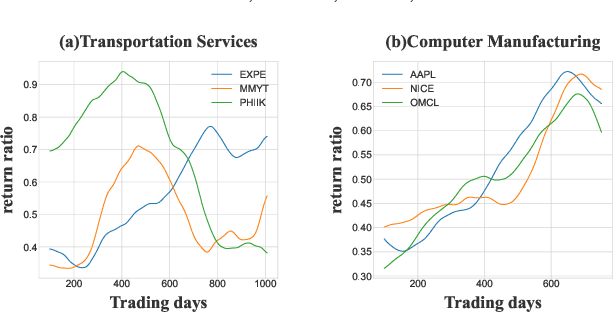

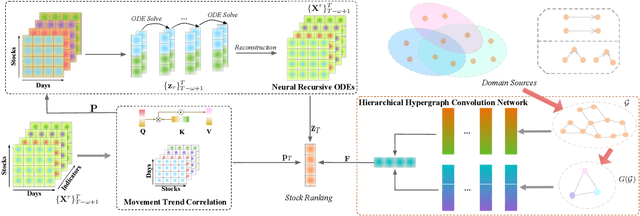

Abstract:Stock selection attempts to rank a list of stocks for optimizing investment decision making, aiming at minimizing investment risks while maximizing profit returns. Recently, researchers have developed various (recurrent) neural network-based methods to tackle this problem. Without exceptions, they primarily leverage historical market volatility to enhance the selection performance. However, these approaches greatly rely on discrete sampled market observations, which either fail to consider the uncertainty of stock fluctuations or predict continuous stock dynamics in the future. Besides, some studies have considered the explicit stock interdependence derived from multiple domains (e.g., industry and shareholder). Nevertheless, the implicit cross-dependencies among different domains are under-explored. To address such limitations, we present a novel stock selection solution -- StockODE, a latent variable model with Gaussian prior. Specifically, we devise a Movement Trend Correlation module to expose the time-varying relationships regarding stock movements. We design Neural Recursive Ordinary Differential Equation Networks (NRODEs) to capture the temporal evolution of stock volatility in a continuous dynamic manner. Moreover, we build a hierarchical hypergraph to incorporate the domain-aware dependencies among the stocks. Experiments conducted on two real-world stock market datasets demonstrate that StockODE significantly outperforms several baselines, such as up to 18.57% average improvement regarding Sharpe Ratio.
Cutting-Splicing data augmentation: A novel technology for medical image segmentation
Oct 17, 2022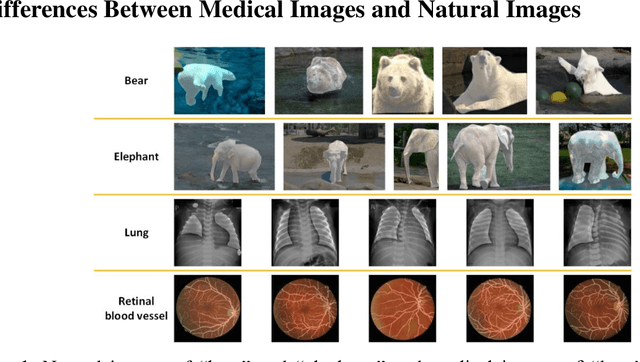
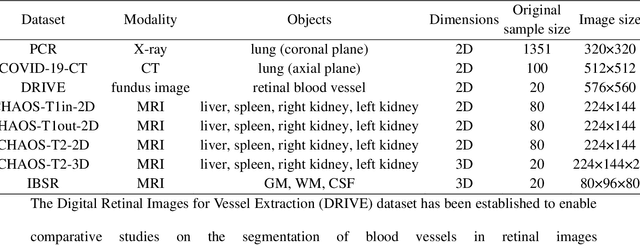
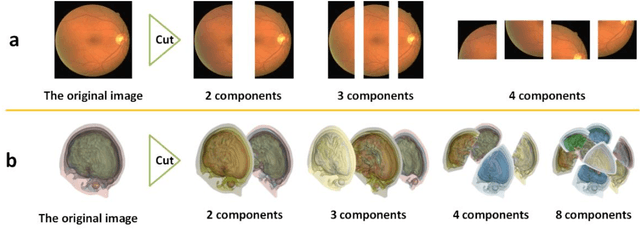
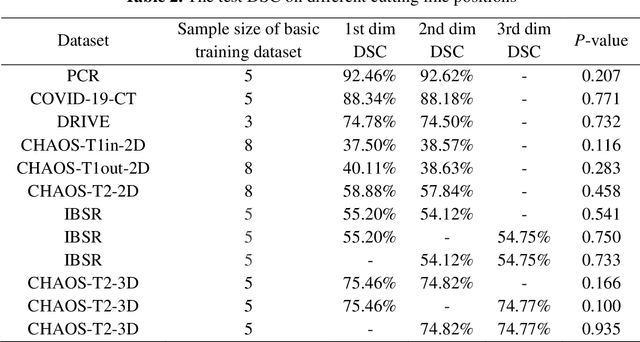
Abstract:Background: Medical images are more difficult to acquire and annotate than natural images, which results in data augmentation technologies often being used in medical image segmentation tasks. Most data augmentation technologies used in medical segmentation were originally developed on natural images and do not take into account the characteristic that the overall layout of medical images is standard and fixed. Methods: Based on the characteristics of medical images, we developed the cutting-splicing data augmentation (CS-DA) method, a novel data augmentation technology for medical image segmentation. CS-DA augments the dataset by splicing different position components cut from different original medical images into a new image. The characteristics of the medical image result in the new image having the same layout as and similar appearance to the original image. Compared with classical data augmentation technologies, CS-DA is simpler and more robust. Moreover, CS-DA does not introduce any noise or fake information into the newly created image. Results: To explore the properties of CS-DA, many experiments are conducted on eight diverse datasets. On the training dataset with the small sample size, CS-DA can effectively increase the performance of the segmentation model. When CS-DA is used together with classical data augmentation technologies, the performance of the segmentation model can be further improved and is much better than that of CS-DA and classical data augmentation separately. We also explored the influence of the number of components, the position of the cutting line, and the splicing method on the CS-DA performance. Conclusions: The excellent performance of CS-DA in the experiment has confirmed the effectiveness of CS-DA, and provides a new data augmentation idea for the small sample segmentation task.
Efficient Search of the k Shortest Non-Homotopic Paths by Eliminating Non-k-Optimal Topologies
Jul 27, 2022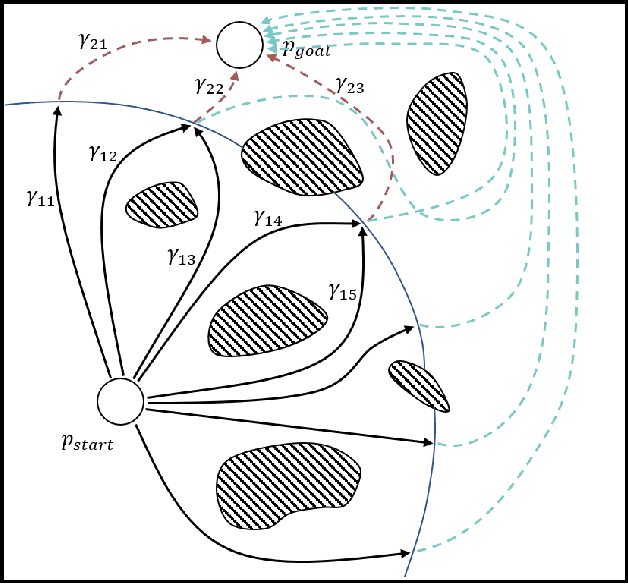


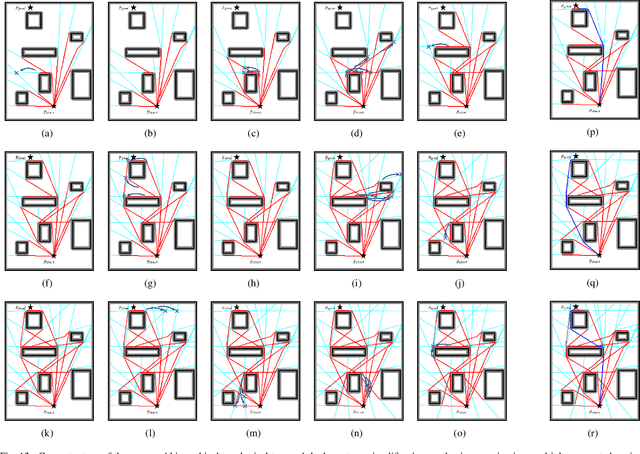
Abstract:An efficient algorithm to solve the $k$ shortest non-homotopic path planning ($k$-SNPP) problem in a 2D environment is proposed in this paper. Motivated by accelerating the inefficient exploration of the homotopy-augmented space of the 2D environment, our fundamental idea is to identify the non-$k$-optimal path topologies as early as possible and terminate the pathfinding along them. This is a non-trivial practice because it has to be done at an intermediate state of the path planning process when locally shortest paths have not been fully constructed. In other words, the paths to be compared have not rendezvoused at the goal location, which makes the homotopy theory, modelling the spatial relationship among the paths having the same endpoint, not applicable. This paper is the first work that develops a systematic distance-based topology simplification mechanism to solve the $k$-SNPP task, whose core contribution is to assert the distance-based order of non-homotopic locally shortest paths before constructing them. If the order can be predicted, then those path topologies having more than $k$ better topologies are proven free of the desired $k$ paths and thus can be safely discarded during the path planning process. To this end, a hierarchical topological tree is proposed as an implementation of the mechanism, whose nodes are proven to expand in non-homotopic directions and edges (collision-free path segments) are proven locally shortest. With efficient criteria that observe the order relations between partly constructed locally shortest paths being imparted into the tree, the tree nodes that expand in non-$k$-optimal topologies will not be expanded. As a result, the computational time for solving the $k$-SNPP problem is reduced by near two orders of magnitude.
 Add to Chrome
Add to Chrome Add to Firefox
Add to Firefox Add to Edge
Add to Edge